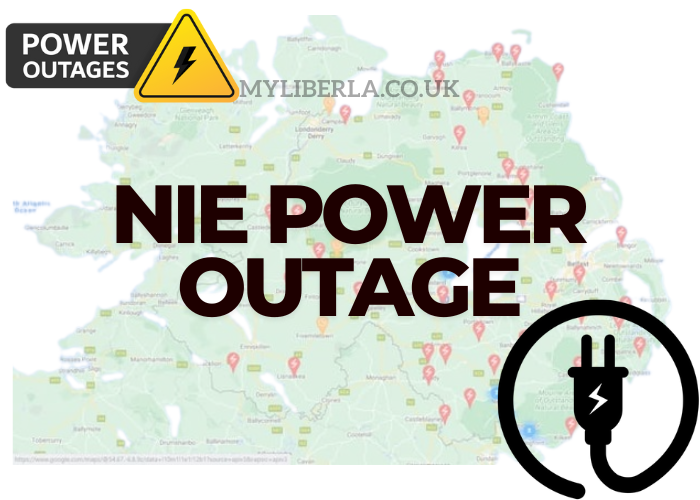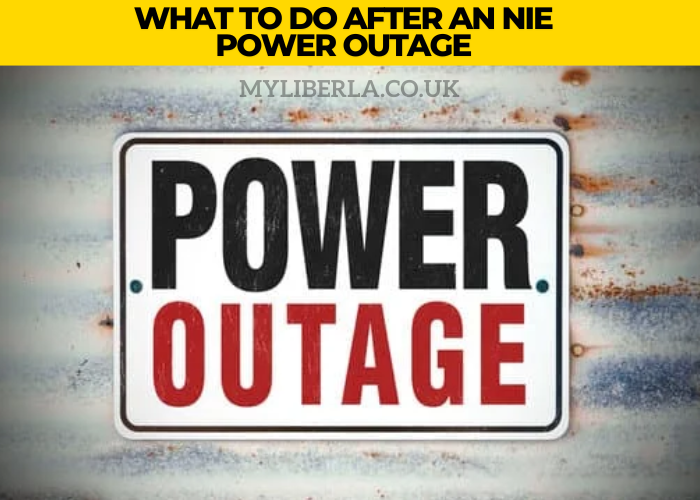NIE Power Outage: What You Need to Know and How to Stay Prepared
A NIE power outage can happen when you least expect it, leaving you in the dark and wondering what to do next. Whether it’s caused by severe weather, technical issues, or maintenance work, being prepared and informed can make all the difference. In this article, we’ll cover everything you need to know about NIE power outages, from identifying the problem to staying safe and comfortable. Let’s dive in and ensure you’re ready for whatever comes your way.

What Causes an NIE Power Outage?
Understanding the reasons behind an NIE power outage can help reduce frustration and anxiety. Common causes include:
- Severe Weather: Storms, high winds, and heavy rain can damage power lines and infrastructure, often leading to widespread outages. It’s essential to monitor weather reports and be aware of approaching storms.
- Maintenance Work: Planned outages for upgrades and repairs are necessary to ensure a reliable power supply in the long term. NIE Networks often announces these in advance, so staying informed is key.
- Technical Failures: Equipment issues, transformer malfunctions, or unexpected faults can lead to sudden NIE power outages with little warning.
- Third-Party Damage: Construction work or accidents can inadvertently cut off power lines, affecting entire neighborhoods.
- Overloaded Systems: During peak times, the electricity grid can experience high demand, which sometimes results in temporary NIE power outages.
How to Check for an NIE Power Outage
If you suspect an NIE power outage, the first step is to verify it. Here’s how:
- Visit the NIE Networks Powercheck website for real-time updates. This tool provides a detailed map of current outages and estimated restoration times.
- Check your fuse box to ensure the problem isn’t within your home. A tripped circuit breaker can sometimes mimic the effects of an outage.
- Contact NIE Networks directly if you can’t find any information online. Their customer service team can confirm whether there’s an outage in your area.
- Check with neighbors. If their power is also out, it’s more likely a local NIE power outage than an issue with your home.
Knowing how to confirm an NIE power outage quickly can help you decide your next steps and avoid unnecessary worry.
Staying Safe During an NIE Power Outage
Safety should always be your top priority during an NIE power outage. Follow these simple tips to keep yourself and your family secure:
- Use Flashlights: Avoid candles to reduce the risk of fire, especially if you have young children or pets.
- Unplug Appliances: This prevents damage from potential power surges when electricity is restored. Sensitive electronics like computers and televisions are particularly vulnerable.
- Stay Warm or Cool: Depending on the season, layer up to retain body heat in winter or stay hydrated and seek shade in summer.
- Limit Refrigerator and Freezer Opening: This helps keep your food cold for longer, reducing the risk of spoilage during an extended NIE power outage.
- Check on Neighbors: Especially the elderly or those with medical needs. A quick check-in can make a big difference.
- Avoid Using Generators Indoors: Carbon monoxide poisoning is a serious risk, so always use generators outside, away from windows and vents.
Preparing for Future NIE Power Outages
While you can’t prevent an NIE power outage, you can definitely be ready for one with a little foresight:
- Emergency Kit: Include batteries, a flashlight, bottled water, non-perishable food, a first-aid kit, and essential medications. Having these supplies on hand can make a power outage more manageable.
- Backup Power: A generator or portable power bank can be a lifesaver, especially if you rely on medical equipment or need to keep communication devices charged.
- Know Your Plan: Have a family plan for extended NIE power outages. Designate a safe meeting place, ensure everyone knows how to operate flashlights and generators, and practice your plan periodically.
- Stay Informed: Sign up for NIE Networks outage alerts to get notifications about power restoration progress and important safety updates.
- Stock Up on Comfort Items: Blankets, board games, and books can help pass the time and keep morale high during an NIE power outage.
When to Report an NIE Power Outage
If your power is out and it’s not listed on the NIE Networks Powercheck site, you should report the NIE power outage immediately. Providing detailed information about your location and the timing of the outage can help crews restore service faster. Don’t assume someone else has already reported it—your call could make the difference.
What to Do After an NIE Power Outage
Once the power comes back on, take a few extra steps to ensure your home and appliances are safe:
- Wait Before Plugging Everything Back In: Allow the grid to stabilize by gradually plugging in appliances.
- Check Refrigerated Food: If the outage lasted more than four hours, inspect perishable items carefully and discard anything that smells off.
- Reset Digital Devices: Clocks, routers, and other electronics may need to be reset.

Final Thoughts
An NIE power outage can be inconvenient, but with the right preparation and information, you can handle it smoothly. Stay informed, stay safe, and make sure your household is ready for the next power outage. By following these steps, you’ll turn what could be a stressful situation into a manageable one.
Let us know in the comments how you prepare for an power outage and share your best tips for staying comfortable until the lights come back on! Your advice could help someone else weather the storm with confidence.
Frequently Asked Questions (FAQ)
Q1: What is an NIE power outage?
A: An NIE power outage occurs when the electricity supply from NIE Networks is interrupted, leaving homes and businesses without power. It can happen due to weather, technical issues, maintenance, or accidents.
Q2: How can I check if there’s an NIE power outage in my area?
A: You can visit the NIE Networks Powercheck website for real-time updates, check your fuse box, contact NIE Networks directly, or ask your neighbors if they’re experiencing the same issue.
Q3: What should I do immediately after a power outage starts?
A: First, check if the outage is just in your home or a larger area. Unplug appliances to avoid power surge damage, use flashlights instead of candles, and limit fridge and freezer openings.
Q4: How long do NIE power outages typically last?
A: The duration varies depending on the cause. Planned maintenance outages usually have an estimated restoration time, while unexpected outages from storms or equipment failures can take longer.
Q5: Can I report an NIE power outage?
A: Yes, if your power is out and it’s not listed on the NIE Networks Powercheck site, you should report it immediately to help crews respond faster.
Q6: How can I prepare for future NIE power outages?
A: Create an emergency kit with essentials like batteries, flashlights, water, and non-perishable food. Consider a backup power source and have a family plan in place.
Q7: Is it safe to use a generator during an NIE power outage?
A: Yes, but only if you use it safely! Keep generators outdoors, away from windows and vents, to avoid carbon monoxide poisoning.
Q8: What should I do when the power comes back on?
A: Gradually plug appliances back in, check refrigerated food for spoilage, and reset any digital devices like clocks and routers.
Q9: How can I stay informed about NIE power outages?
A: Sign up for NIE Networks outage alerts, follow their social media channels, or check their website for updates and safety information.
Q10: Who should I contact for more information about NIE power outages?
A: You can reach out to NIE Networks customer service for detailed answers and support during any power disruption.


